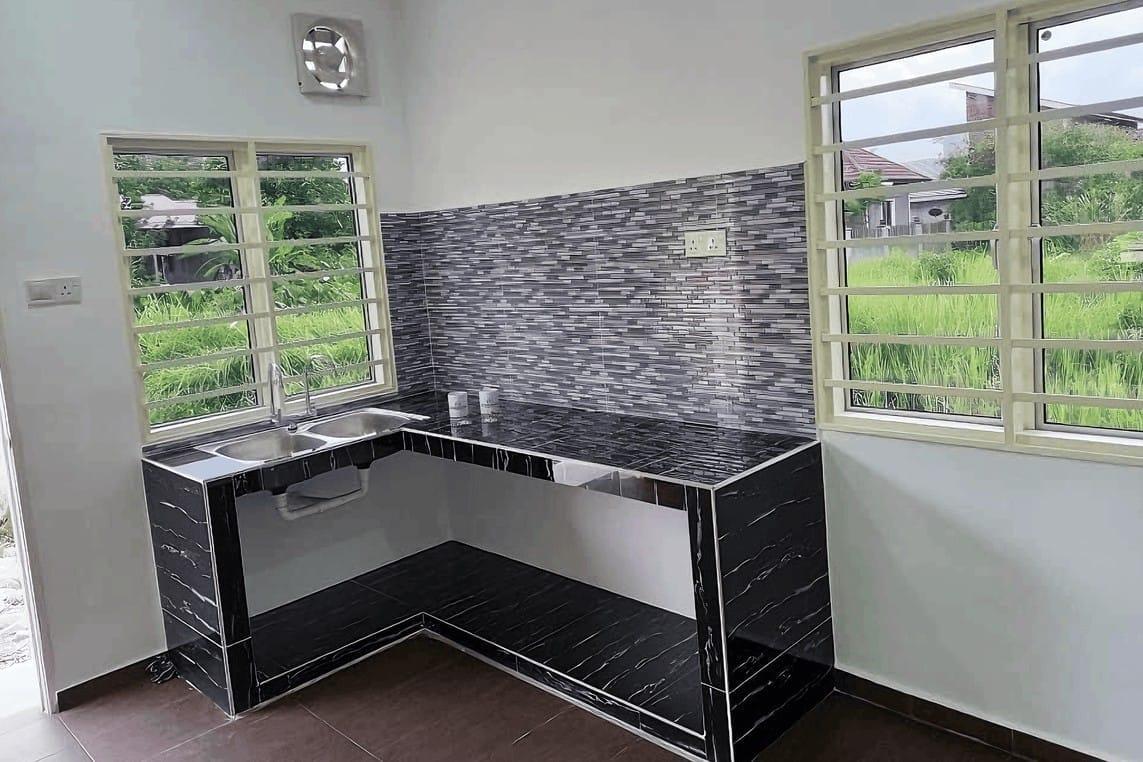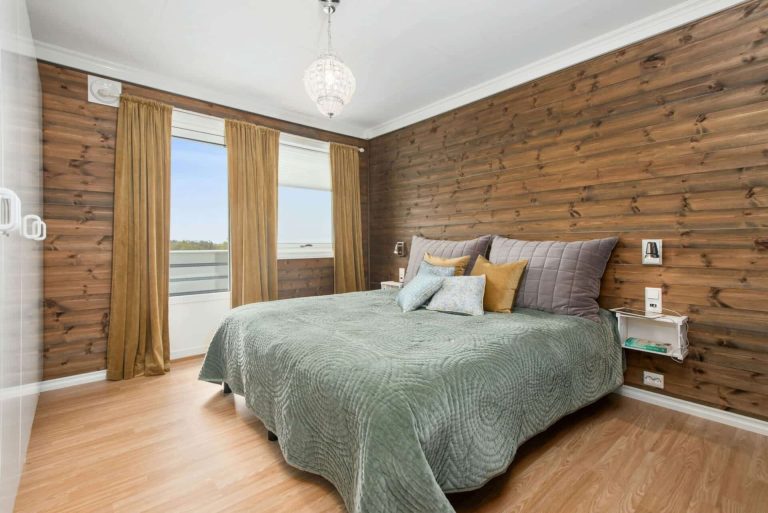Hey there! Have you ever wondered why your energy bills seem to skyrocket, especially during the sweltering Malaysian heat? Well, you might want to take a closer look at your home’s insulation. It’s one of those things that doesn’t always get the spotlight, but choosing the right insulation can make a world of difference in how much you spend every month on cooling and heating. In this article, we’ll dive into the ins and outs of insulation, explore the various types available, and show you how making a smart choice could save you thousands of ringgit in the long run. So, grab a cup of teh tarik, get comfy, and let’s unravel the mystery of insulation together!
Understanding the Impact of Insulation on Energy Efficiency
When it comes to energy efficiency, insulation plays a pivotal role in maintaining comfortable indoor temperatures while minimizing energy consumption. Proper insulation acts as a barrier that limits the transfer of heat, keeping your home warm during colder months and cool when the temperature rises. This ensures that your heating and cooling systems don’t have to work overtime, which ultimately leads to significant savings on your energy bills. Choosing the right materials for insulation can make a world of difference, especially in the tropical climate of Malaysia, where humidity and heat can be relentless.
There are several types of insulation available, and understanding their properties can help you make the best choice for your home. Here are some popular options:
- Fiberglass Insulation: Lightweight and cost-effective, it’s suitable for walls, attics, and ceilings.
- Foam Board Insulation: Ideal for high-efficiency systems, it provides excellent thermal resistance and minimizes air leaks.
- Reflective or Radiant Barrier Insulation: Particularly beneficial in hot climates, it reflects radiant heat away from living spaces.
- Spray Foam Insulation: This expands on application to fill gaps and cracks, offering superior air sealing capabilities.
Ultimately, your choice of insulation not only affects comfort but also impacts the lifespan of your HVAC systems. A well-insulated home requires less frequent heating and cooling cycles, leading to reduced wear and tear on equipment. Consider the following table that summarizes the potential savings based on different insulation types:
| Insulation Type | Estimated Annual Savings |
|---|---|
| Fiberglass | RM 300 - RM 600 |
| Foam Board | RM 400 - RM 800 |
| Reflective Barrier | RM 200 – RM 500 |
| Spray Foam | RM 500 – RM 1000 |

Exploring Different Types of Insulation Materials
When it comes to keeping your home comfortable while saving on energy bills, the type of insulation you choose can make all the difference. Each material has its pros and cons, which can impact both your budget and the environment. Here are a few popular insulation types that you might want to consider:
- Fiberglass: One of the most common choices, fiberglass insulation is known for its excellent thermal resistance. It’s lightweight, non-combustible, and relatively inexpensive.
- Spray Foam: This option expands upon application, filling in gaps and crevices effectively. Although on the pricier side, its air-sealing properties can lead to substantial energy savings.
- Cellulose: Made from recycled paper products, cellulose is eco-friendly and provides good sound insulation. It’s treated for fire resistance and can help reduce energy consumption.
Now, if you’re curious about their effectiveness, here’s a quick comparison of thermal resistance (R-value) for these materials:
| Insulation Type | R-Value (per inch) |
|---|---|
| Fiberglass | 2.9 – 3.7 |
| Spray Foam | 6.5 - 7.0 |
| Cellulose | 3.1 – 3.7 |
Another factor to consider is environmental impact. If you’re eco-conscious, exploring natural insulation materials like sheep’s wool or straw bales might be a viable option. Though these materials may require a higher initial investment, they can provide excellent thermal performance and often come with lower environmental costs. Understanding your specific needs and the characteristics of each insulation type will help you make a well-informed decision that could lead to significant long-term savings on energy bills.

Identifying Common Insulation Mistakes Homeowners Make
When it comes to insulation, many homeowners make choices that end up costing them more in the long run. One of the biggest blunders is underestimating the importance of proper ventilation. Poor ventilation can trap heat and moisture, leading to mold growth and structural damage. It’s crucial to ensure your insulation isn’t just slapped on haphazardly—consider a well-planned ventilation system alongside your insulation to create an energy-efficient home.
Another common mistake is overlooking insulation R-values. R-value indicates how well insulation can resist heat flow, and not all materials are created equal. Just choosing a thick layer of insulation doesn’t guarantee effectiveness. Homeowners might be tempted to save on upfront costs by opting for cheaper materials, but this short-sighted approach can lead to higher energy bills over time. Always look for the right balance between cost, R-value, and material suitability for your climate.
| Insulation Type | Typical R-Value | Best Use |
|---|---|---|
| Fiberglass | 2.9-4.3 per inch | Floors, walls, and ceilings |
| Foam Board | 5-6.5 per inch | Foundation and exterior walls |
| Spray Foam | 6-7 per inch | Attics and irregular spaces |
another pitfall is ignoring the importance of proper installation. Even the best insulation can fail if it’s not installed correctly. Homeowners often miss gaps or leave areas uninsulated, which can lead to heat loss in winter and excessive heat gain in summer. Engaging a professional for the installation can make all the difference, ensuring every inch is covered and performing to its fullest potential.

The Role of R-Value in Insulation Performance
When you’re considering insulation for your home, one of the crucial factors to look at is the R-value. This measure indicates how well a material resists heat flow. The higher the R-value, the better the insulation’s performance in keeping your home comfortable, regardless of the outside temperature. In Malaysia’s humid climate, where air conditioning is often a necessity, the right R-value can be your secret weapon in reducing energy consumption and saving money on those pesky monthly bills.
Different materials exhibit varying R-values. For instance, common insulation options include:
- Fiberglass: R-values generally range from 2.9 to 4.3 per inch.
- Foam Board: Offers higher R-values, about 5 to 7 per inch.
- Spray Foam: Can achieve R-values between 6 and 7 per inch, making it one of the top choices for efficiency.
By understanding these values, you can select insulation that matches your home’s needs; for some areas, you might even consider combining materials to maximize energy savings. For example, using spray foam in harder-to-reach areas and fiberglass in the attic could provide effective temperature control.
Now, it’s not just about choosing a type—placement also matters. Here’s a simple summary of R-value recommendations based on different regions in Malaysia:
| Region | Recommended R-Value |
|---|---|
| Equatorial Areas | R-19 |
| Coastal Locations | R-22 |
| Highland Areas | R-30 |
Ultimately, knowing your home’s specific needs based on R-values can lead to better insulation choices that won’t just keep you cooler but will also have a significant impact on your energy bills. Inspect your insulation options thoroughly, and don’t hesitate to consult professionals to determine the best approach suited for your climate and living conditions.

How Proper Installation Can Maximize Energy Savings
When it comes to insulation, installation makes a world of difference. Even the best materials won’t perform as expected if they’re not installed correctly. This is why hiring a skilled professional or having a solid DIY plan is crucial. Air leaks, gaps, and compressed materials can all undermine an insulation system, making your home less efficient than it could be. Keeping a tight seal on every nook and cranny means your insulation can do its job protecting against the elements!
Choosing the right type of insulation is only half the battle—how it’s put in matters just as much. A few key tips include:
- Ensure there’s no moisture buildup, as this can lead to mold and reduce insulation effectiveness.
- Consider your home’s design; different areas may require different types of insulation.
- Make sure to follow manufacturer guidelines for installation to get the most out of your materials.
Here’s a simple comparison of insulation types and their expected performance when installed properly:
| Insulation Type | R-Value (per inch) | Cost (per square foot) |
|---|---|---|
| Fiberglass Batts | 2.9 - 4.3 | RM 1.50 |
| Spray Foam | 6 – 8 | RM 4.00 |
| Cellulose | 3.1 – 3.7 | RM 2.00 |

Where to Focus Your Insulation Efforts for Optimal Results
When it comes to maximizing the efficiency of your insulation, targeting the right areas in your home can make all the difference. Begin with your attic—the first line of defense against heat loss in both the hot and cool months. Since heat rises, ensuring that your attic is properly insulated with materials like fiberglass batts or spray foam can prevent costly energy leaks.
Next on your list should be walls, especially exterior walls, which often let in unwanted heat and humidity. Insulating these areas not only keeps your home cooler during the sweltering Malaysian summers, but it also makes your air conditioning more efficient. Look at options like injected foam or cellulose insulation, which can easily fill gaps and resist moisture.
Don’t overlook areas like the basement and crawl spaces, where air can seep in and affect indoor temperatures. Sealing these areas with appropriate insulation not only improves comfort but also helps in reducing energy bills. Explore various materials such as rigid foam boards for basement walls or spray foam for crawl spaces to enhance energy efficiency.

Assessing the Long-Term Financial Benefits of Quality Insulation
Investing in quality insulation goes beyond just comfort; it’s a smart financial decision that can yield significant savings over time. When you opt for high-quality materials, you can expect substantial benefits such as:
- Reduced Energy Costs: Proper insulation keeps your home cooler in hot months and warmer during cold spells, minimizing the need for constant air conditioning or heating.
- Longer Lifespan of HVAC Systems: With less strain on your heating and cooling equipment, you can prolong the lifespan of these systems, thus avoiding costly replacements.
- Increased Property Value: Homes with efficient insulation are attractive to buyers, potentially raising the property’s market value.
Let’s break it down even further. Imagine a household with standard insulation versus one equipped with higher-grade materials. The energy savings can be quite staggering. Here’s a quick look at potential annual savings:
| Insulation Type | Estimated Annual Savings (MYR) |
|---|---|
| Standard Insulation | 1,200 |
| Quality Insulation | 2,400 |
By choosing better insulation, you not only cut costs but also contribute to a more sustainable future. This means less energy waste, resulting in a positive impact on the environment. Plus, better insulation can help minimize temperature fluctuations which can lead to a more stable and pleasant indoor climate throughout the year. In the long run, the upfront investment in quality insulating materials is often recouped through lower energy bills, making it a wise choice for homeowners looking to enhance both their living space and their finances.

Tips for Selecting the Right Insulation Professional for Your Project
When it comes to finding the right insulation professional, it’s crucial to do your homework. Start by getting recommendations from friends, family, or online forums. A personal referral can often lead to reliable contractors who have a history of satisfied customers. Also, check for online reviews to see what previous clients are saying about their experiences. Trust is key, so take your time to gather as much information as possible before making a decision.
Once you have a shortlist, don’t hesitate to ask for credentials and certifications. A qualified professional should be licensed and insured, protecting you from potential liabilities. During your initial conversations, assess their knowledge about different insulation types available, especially those suited to the Malaysian climate, like cellulose or spray foam. Ask specific questions, such as:
- What is the R-value of the insulation you recommend?
- How will your method improve energy efficiency?
- Can you provide a detailed estimate for the project?
Additionally, don’t shy away from considering the cost vs. value. While it may be tempting to choose the cheapest option, remember that quality matters in the long run. To help you weigh your options, consider using a simple comparison table:
| Professional | Experience | Quoted Price | Customer Reviews |
|---|---|---|---|
| Insulation Expert A | 10 years | RM3000 | 4.8/5 |
| Insulation Pro B | 5 years | RM2500 | 4.0/5 |
| Insulation Specialist C | 8 years | RM2800 | 4.5/5 |
This will give you a clear view of what each contender brings to the table (pun intended!) and help you make an informed decision.
In Conclusion
In a nutshell, picking the right insulation isn’t just about keeping your home comfy; it’s a smart financial move too! By investing a little time and effort into understanding your insulation options, you could potentially save yourself a big chunk of change on those monthly energy bills. Malaysia’s climate can be a tricky balancing act between staying cool and keeping costs down, but the right insulation helps you hit that sweet spot.
So, whether you’re building a new home or looking to upgrade your current setup, think twice before skimping on insulation. Do your homework, consult with professionals, and choose wisely. Trust us, your wallet will thank you in the long run! Here’s to making your home more comfortable and your bank account a little happier. Happy insulating!







